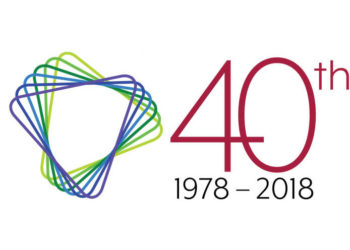Last week’s Society for Scholarly Publishing (SSP) Annual Meeting was both its usual informative glimpse at the future of scholarly communications, and this year a joyful celebration of 40 years of the Society and 10 years of The Scholarly Kitchen. As the blog’s editor, the meeting was an opportunity to re-think The Scholarly Kitchen — we’re pretty far from our humble roots as Kent Anderson and Sue Kesner’s experiment in social media. The recent survey we performed brought in an enormous amount of thoughtful and really useful suggestions (the results will be released shortly and we’ll have a few posts analyzing the data). So I took all this to the SSP’s Board (full disclosure, I’m on the Board) and we had a really productive discussion about how to take The Scholarly Kitchen into the next 10 years. We have some interesting new initiatives planned for the next few months, so stay tuned.
But before we move forward, one last look back. As we approach our 10 millionth pageview (should happen in the next week or two), what were the most read posts of the last 10 years on The Scholarly Kitchen?

The first thing that may surprise you about our list is that the five most read posts in the history of the blog all cover one subject: PLOS ONE and its Impact Factor (in rank order, here, here, here, here, and here). Readers often accuse us of being a bit PLOS ONE obsessed, but can you blame us — these five posts alone have been viewed more than 840,000 times. PLOS ONE remains, without a doubt, one of the most important innovations and one of the greatest success stories of the century in scholarly publishing and the attention it draws is warranted.
To be fair though, the traffic is probably being distorted by journal authors searching Google for the latest Impact Factor score for the journal. Despite decades of recognition of the metric’s flaws, and six years of DORA, the Impact Factor continues to dominate the career and funding paths of many researchers. So when it comes time to publish, those looking at PLOS ONE as an option are likely to come across our past articles. I wrote about this phenomenon back in 2013, and it still seems to be an active one (note: not in our top 10, that post has only been viewed a mere 5,278 times).
So, if we remove all of the PLOS ONE Impact Factor posts, what are the top 10 most read (essentially, what are numbers 6 – 15 on our most-viewed list)?
Sci-Hub: How Does It Work (71,465 views): While many publishers and librarians have likely read this post to better understand this deeply problematic website, I suspect we’re also bringing in a good share of those looking to use Sci-Hub, who are disappointed by this analysis of their methods, rather than finding a set of instructions and links to the site.
The End of an Era for Academia.edu and Other Academic Networks? (45,115 views): Perhaps 2013 was a premature time to declare “the end” but it certainly marked the beginning of efforts to address copyright infringement on scholarly collaboration networks (SCNs). While Academia has largely been surpassed by ResearchGate, this is still an ongoing process (9,614 views).
The Typography of Authority — Do Fonts Affect How People Accept Information? (43,983 views): The interest in this post sparks joy in the heart of this typography/design nerd. Here, Kent Anderson looks at the subtle design cues that play such an important role in what we do.
Open Access Publisher Accepts Nonsense Manuscript for Dollars (43,940 views): Open access stings? We were into those back before they were cool. In 2009, Kent and Phil Davis sent a gibberish paper to what would later be called a “predatory” publisher to see if they would accept it. This nonsense study, from the Center for Research in Applied Phrenology (CRAP) was accepted, and a bill for $800 was received. Sadly, it’s a subject we covered that’s as relevant today as it was back then.
Book Review — “David and Goliath” by Malcolm Gladwell (37,596 views): Book reviews have long been a staple in The Scholarly Kitchen. Most, however, do not capture the audience this one did.
Gaming Google Scholar Citations Made Simple and Easy (36,367 views): Again, another post where I’m concerned that a lot of readers are coming here for instructions, rather than the exposé that’s presented here.
2014 Journal Impact Factors (34,007 views): More Impact Factor. Is there any doubt of the power this metric still holds?
The Emergence of a Citation Cartel (32,446 views): The other side of the Impact Factor. As evidenced by the Google Scholar post above, when you turn a measurement into a goal, it stops being a useful measurement.
Scientific Reports On Track to Become Largest Journal In The World (28,572 views): Did I mention that people are really interested in megajournals and how important they are to scholarly communication?
What Is a Career in Publishing? Recruiting the Talent We Need for the 21st Century (27,947 views): Michael Clarke looks at our industry’s failures in marketing ourselves to the next generations of potential publishers. This post is from 2010, and strategies to attract a diverse workforce have since become major topics of discussion in the Kitchen.
That wraps up our top 10 (or 15 depending on how one counts). What’s your favorite post, and what subjects will be in our top 10 a decade from now? Let me know in the comments below.
Discussion
2 Thoughts on "The Scholarly Kitchen’s Greatest Hits — 10 Years of Top Posts"
Surprising how the “Most Viewed” and “Most Commented” sections of the website have disappeared…. They gave a more accurate reading.
The article highlighting the experiences of POC within scholarly publishing was one of the most viewed and commented and we are seeing an active revising of history in this post by neglecting to include it as a worthy subject. Why is Scholarly Kitchen trying to hide what they’ve posted? Are the conversations that sprang forth from the groundbreaking article of anonymous employees who have experienced racism, bigotry and discrimination within the scholarly publishing community not worthy of revisiting as one of the most impactful of not only this year but the past 10?
My. That’s quite a set of accusations.
We’ve temporarily pulled down the Most Viewed/Commented widgets because they were proving to be resource heavy, slowing site load times significantly. We’re currently seeking a replacement.
As for the “POC” posts, those are indeed, at least in my opinion, two of the most important posts we’ve offered here. However, both are fairly recent, from April and May of this year, so they haven’t yet had time to accumulate the same sort of statistics that a ten year old post has. The first has just over 9,200 views, the second around 3,400.
Since this post was to show the list of the all time highest viewed posts, neither has climbed that high, at least so far. I’m hoping they eventually will.
But I can assure you that there has been no attempt to “hide” those posts.



